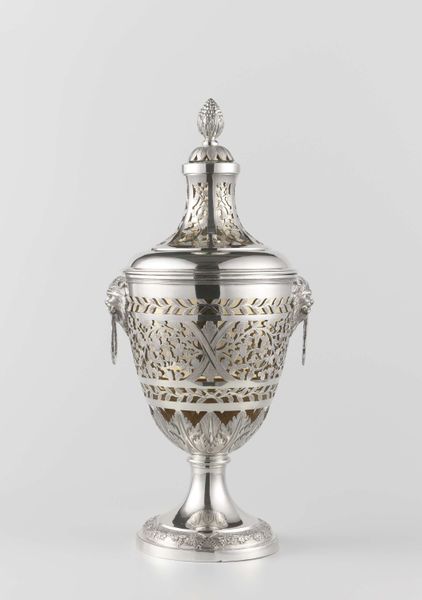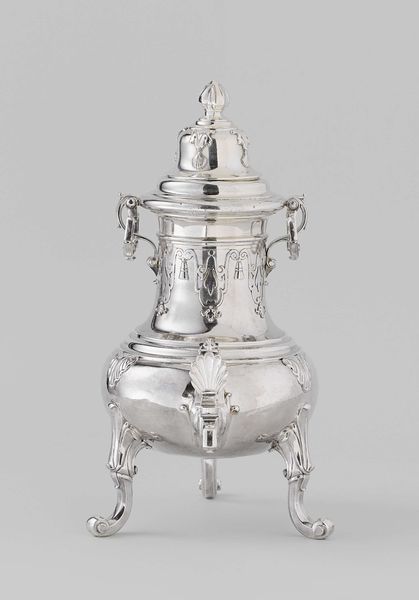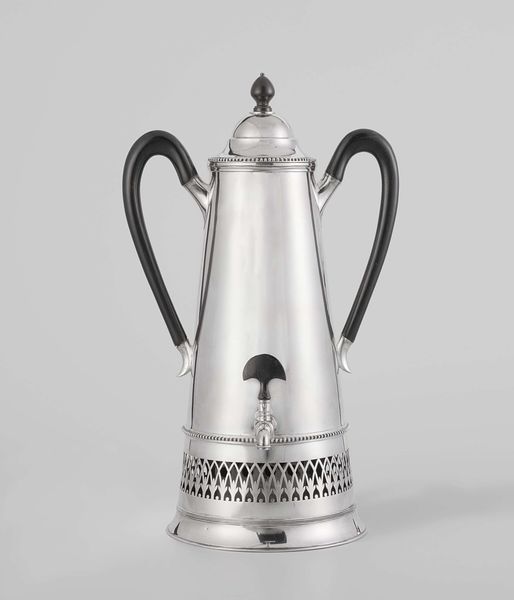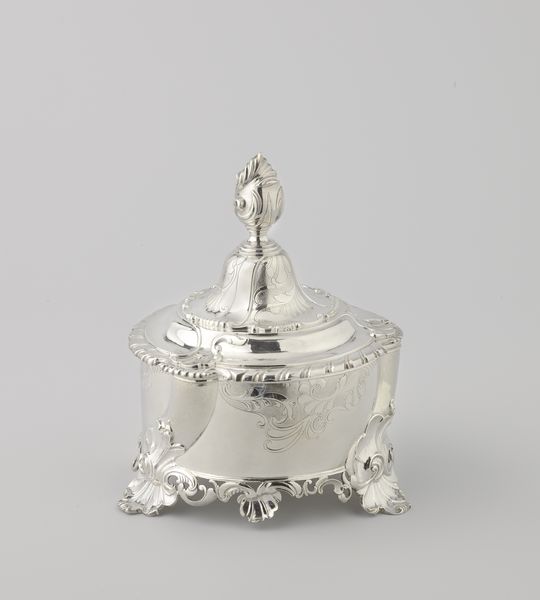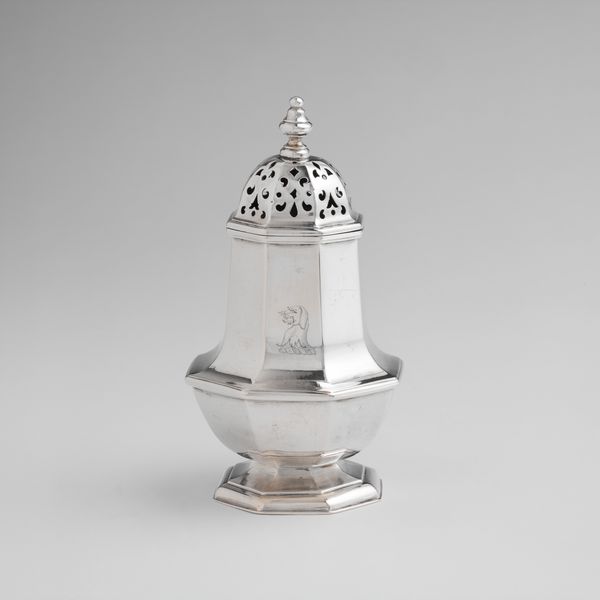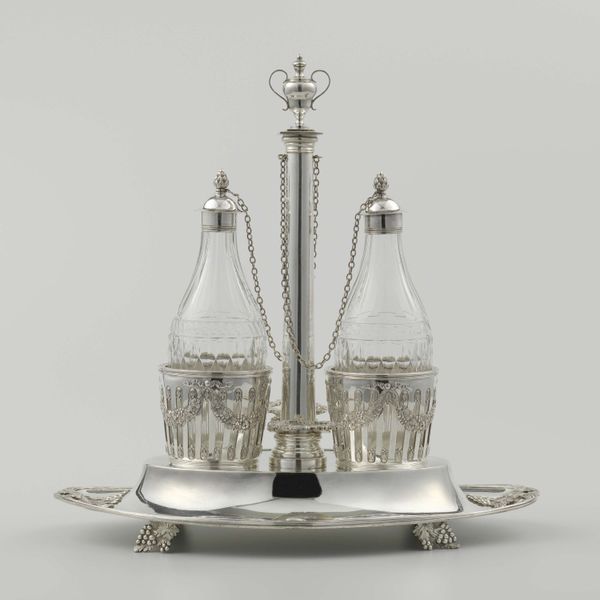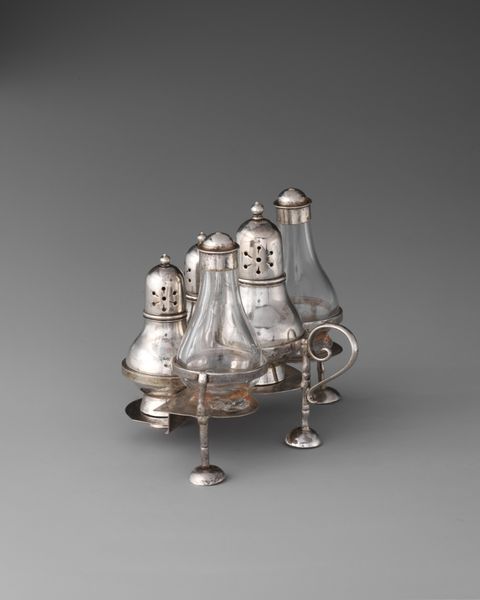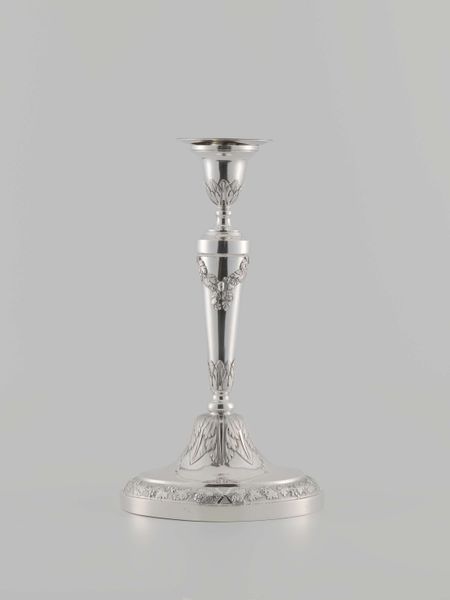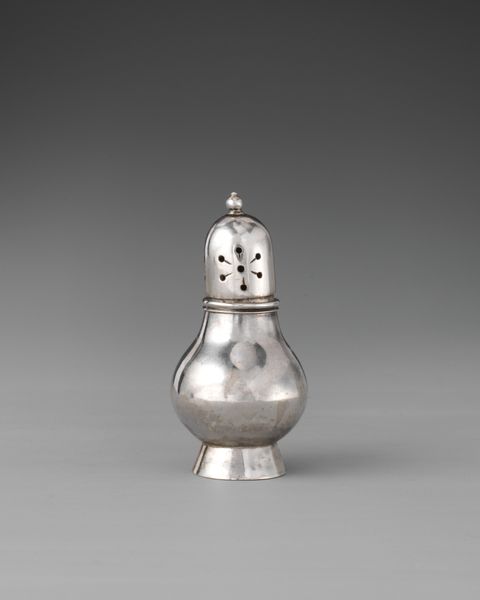
Kraantjeskan van zilver, achthoekig, op vier voluutvormige poten met klokvormige voetjs. Klokvormig handvat van ebbenhout met omlijsting van zilver 1749
0:00
0:00
carving, silver, metal
#
carving
#
silver
#
baroque
#
metal
#
decorative-art
Dimensions: height 29.1 cm, width 22.9 cm, weight 1147.0 gr
Copyright: Rijks Museum: Open Domain
Curator: This object is a "Kraantjeskan van zilver," or a silver hot water urn, dating from 1749. It features an octagonal shape and stands on four volute-shaped legs with bell-shaped feet. The handle is made of ebony, framed with silver. Editor: Well, it strikes me as both intensely ornate and strangely melancholic, maybe because of the subdued gleam of the silver? I imagine quiet mornings, sunlight catching the curves... and a certain weight of history, of course. Curator: Indeed. Silverwork like this reveals much about social status and consumption during the Baroque era. Silver as a material signals wealth, and the level of craftsmanship suggests a significant investment of skilled labor. It also blurs the boundaries of "high art" since practical object becomes sculptural piece. Editor: Exactly! There's a tension here. The ebony handle against the silver…it’s a tactile dance. It makes you wonder who designed this – some forgotten artist pouring their heart and skill into everyday luxury? What's the story behind Reynier de Haan who made this? I think about their workshop, the clamor, the intense focus. Curator: The hallmark reveals it was made by Reynier de Haan. While further archival research is needed, looking at related works, the maker’s mark, and comparing the silver content will likely reveal details about the social dynamics, workshop and consumer context of that time. The design, with its emphasis on display rather than just pure function, shows a shift in the use of precious metals. Editor: Function! Oh, sure, it’s *functional*, but mostly it whispers about rituals, wealth, and a slower pace of life. You can almost feel the heat radiating from it, the weight in your hand. I think a good photograph of the maker, the time the item was created and the actual physical weight should always accompany display tags of items such as these. Curator: Your feeling is on point; that makes sense. I would argue it isn’t about slowness as such. Instead, perhaps it reveals different ways of valuing labour time or even access to global material supply networks. Silver like this suggests the entanglement of the domestic interior within a wider world. Editor: Maybe so! I still maintain that even after appreciating the labor, the material context, there's still room to stand back and wonder... to let the imagination fill it with unspoken histories. To really think about those hands that formed it.
Comments
No comments
Be the first to comment and join the conversation on the ultimate creative platform.

